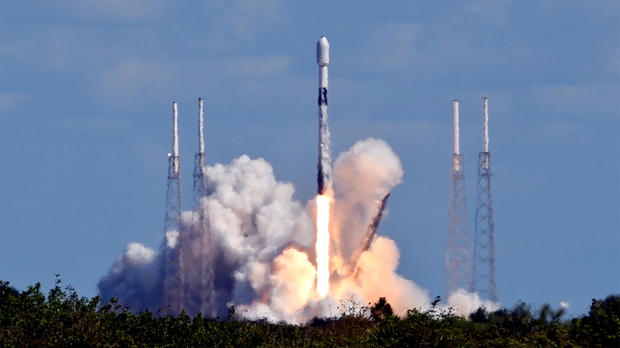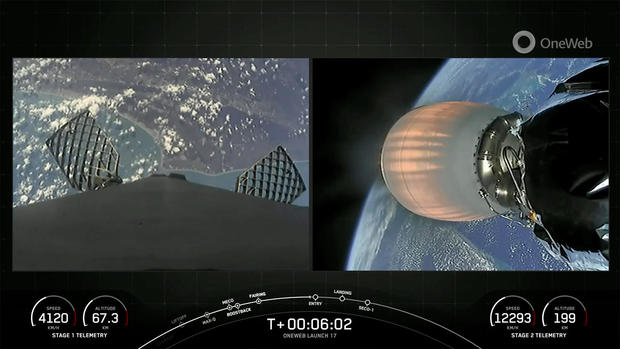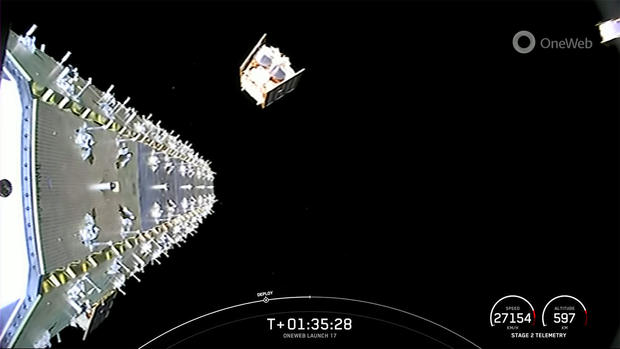SpaceX Falcon 9 rocket launches third batch of OneWeb internet satellites
A SpaceX Falcon 9 rocket carried a third batch of 40 OneWeb internet satellites into orbit Thursday, helping the London-based company expand its constellation of broadband relay stations to 582 operational spacecraft.
Another group of 36 OneWeb satellites, scheduled for launch later this month atop an Indian GSLV rocket, will give the company global coverage with a final SpaceX flight on tap later this year to top off the fleet at nearly 650.
For Thursday's flight, the Falcon 9, using a first stage booster making its 13th flight, blasted off from pad 40 at the Cape Canaveral Space Force Station at 2:13 p.m. EST, quickly racing away on a southeasterly trajectory.
The well-traveled first stage boosted the rocket out of the lower atmosphere and then fell away to fly itself back to a picture-perfect landing at the Space Force station while the second stage continued the climb to orbit. The landing marked SpaceX's 177th successful booster recovery and its 32nd at Cape Canaveral.
The second stage, meanwhile, reached its planned orbit after two engine firings and the first two 325-pound OneWeb satellites were released to fly on their own about an hour after launch. The remaining 38 were released over the next 36 minutes.
Deployed in an initial 373-mile-high orbit tilted 87 degrees to the equator, the solar-powered satellites will use on-board xenon ion thrusters to reach their operational altitude of about 745 miles.
SpaceX and OneWeb are both building space-based constellations of broadband relay satellites, but the two companies are targeting different segments of the data communications marketplace.
SpaceX is launching thousands of low-altitude Starlink internet satellites -- 4,053 have been launched to date -- to provide high-speed, low-latency broadband access to consumers around the world as well as government agencies and commercial customers.
OneWeb is focused more on government/commercial maritime, aviation and land-based mobility markets using a much smaller number of higher-altitude satellites. With Thursday's launch, OneWeb's constellation grew to 582 operational spacecraft.
Getting to this point has not been easy, as the company has had to weather bankruptcy and the impact of Russia's invasion of Ukraine.
OneWeb's first 13 launches used Russian Soyuz rockets. Last March, the company was gearing up for its 14th launch aboard another Soyuz when the Ukraine invasion triggered harsh western sanctions. In retaliation, Russia demanded that OneWeb cut its ties with the British government, which is a partial owner of the company.
OneWeb refused, and Russia confiscated the satellites awaiting launch at the Baikonur Cosmodrome in Kazakhstan. OneWeb then scrambled to build replacements and booked its next flight on an Indian GSLV that successfully flew last October. SpaceX then launch two batches of 40 OneWeb satellites in December and January.
Thursday's launch was the third of four currently booked with SpaceX.







